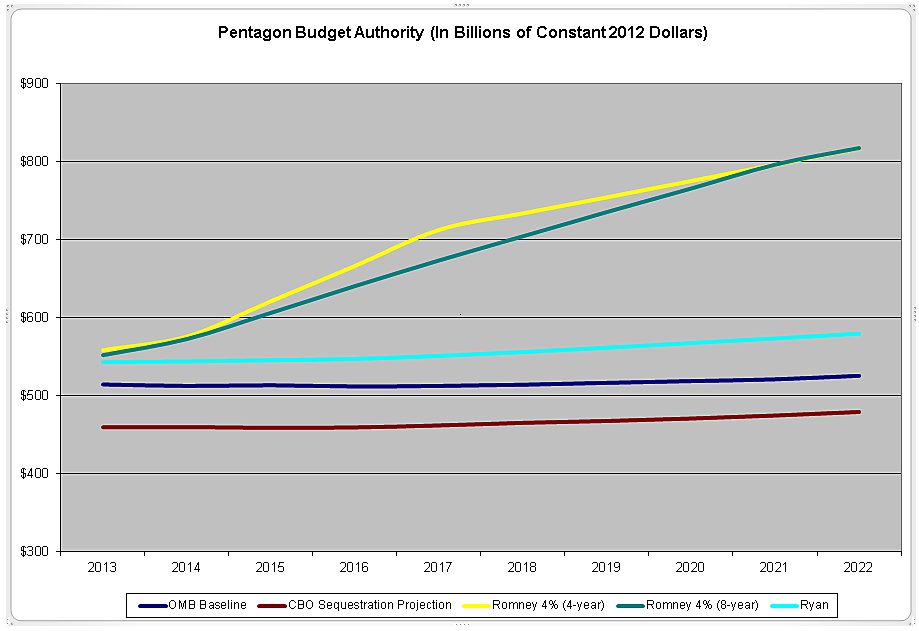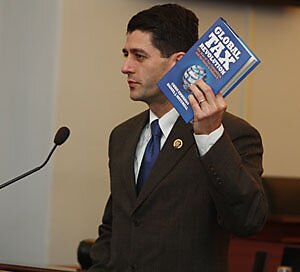Even though I’ve already made clear that I am less-than-overwhelmed by the thought of Mitt Romney in the White House, I worry that people will start to think I’m a GOP toady.
That’s because I’ve been spending a lot of time providing favorable analysis and commentary on the relative merits of the Ryan budget (particularly proposed reforms to Medicare and Medicaid) compared to President Obama’s statist agenda of class warfare and bigger government.
I’ve already done a couple of TV interviews on Ryanomics vs Obamanomics and the Wall Street Journal this morning published my column explaining the key features of the Ryan budget.
Here are some highlights.
In one of my early paragraphs, I give Ryan credit for steering the GOP back in the right direction after the fiscal recklessness of the Bush years.
…the era of bipartisan big government may have come to an end. Largely thanks to Rep. Paul Ryan and the fiscal blueprint he prepared as chairman of the House Budget Committee earlier this year, the GOP has begun climbing back on the wagon of fiscal sobriety and has shown at least some willingness to restrain the growth of government.
I probably should have also credited the Tea Party, but I’ll try to make up for that omission in the future.
These next couple of sentences are the main point of my column.
The most important headline about the Ryan budget is that it limits the growth rate of federal spending, with outlays increasing by an average of 3.1% annually over the next 10 years. …limiting spending so it grows by 3.1% per year, as Mr. Ryan proposes, quickly leads to less red ink. This is because federal tax revenues are projected by the House Budget Committee to increase 6.6% annually over the next 10 years if the House budget is approved (and this assumes the Bush tax cuts are made permanent).
Some conservatives complain that the Ryan budget doesn’t balance the budget in 10 years. I explain how that could happen, but I then emphasize that what really matters is shrinking the burden of government spending.
To balance the budget within 10 years would require that outlays grow by about 2% each year. …There are many who would prefer that the deficit come down more quickly, but from a jobs and growth perspective, it isn’t the deficit that matters. Rather, what matters for prosperity and living standards is the degree to which labor and capital are used productively. This is why policy makers should focus on reducing the burden of government spending as a share of GDP—leaving more resources in the private economy. The simple way of making this happen is to follow what I’ve been calling the golden rule of good fiscal policy: The private sector should grow faster than the government.
Actually, I’ve been calling it Mitchell’s Golden Rule, but I couldn’t bring myself to be that narcissistic and self-aggrandizing on the nation’s most important and influential editorial page.
One final point from the column that’s worth emphasizing is that Ryan does the right kind of entitlement reform.
One of the best features of the Ryan budget is that he reforms the two big health entitlements instead of simply trying to save money. Medicaid gets block-granted to the states, building on the success of welfare reform in the 1990s. And Medicare is modernized by creating a premium-support option for people retiring in 2022 and beyond. This is much better than the traditional Beltway approach of trying to save money with price controls on health-care providers and means testing on health-care consumers. …But good entitlement policy also is a godsend for taxpayers, particularly in the long run. Without reform, the burden of federal spending will jump to 35% of GDP by 2040, compared to 18.75% of output under the Ryan budget.
The last sentence of the excerpt is critical. If the Golden Rule of fiscal policy is to have the private sector grow faster than government, then the Golden Goal is to reduce government spending as a share of GDP.
I’ve commented before how America will become Greece in the absence of reform. Well, that’s basically the Obama fiscal plan, as illustrated by this amusing cartoon.
What makes the Ryan budget so impressive is that it includes the reforms that are needed to avoid this fate.
No, it doesn’t bring the federal government back down to 3 percent of GDP, so it’s not libertarian Nirvana.
But we manage to stay out of fiscal hell, so that counts for something.


